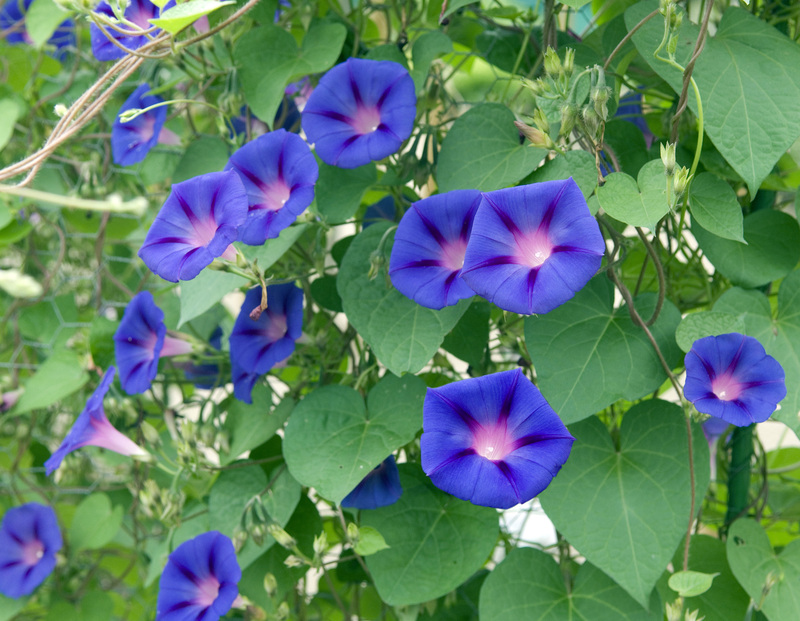Mastering the Art of Orchid Care
Posted on 16/09/2025
Mastering the Art of Orchid Care: A Comprehensive Guide
Orchids, with their mesmerizing beauty and exotic charm, hold a special place in the world of gardening and indoor plant care. If you've ever gazed at a thriving orchid and wondered, "Can I really keep these stunning blooms alive?"--the answer is a resounding yes! Whether you're an eager beginner or a seasoned horticulturist, mastering the art of orchid care requires understanding and patience. In this ultimate guide, we'll demystify the complexities of orchid cultivation and provide expert tips for helping your orchids flourish year-round.

Understanding Orchids: The World's Most Enchanting Plant Family
Orchids are among the largest and most diverse plant families on Earth, boasting over 25,000 species and more than 100,000 hybrids. From the vibrant Phalaenopsis (moth orchid) to the regal Cattleya, each variety has its unique appeal and specific care needs. Yet, many principles of orchid maintenance remain consistent across the spectrum.
- Orchid Anatomy: Understanding basic orchid anatomy--leaves, roots, pseudobulbs, and blooms--is crucial for effective care.
- Epiphytic vs. Terrestrial Orchids: Most popular orchid varieties are epiphytes, meaning they naturally grow on trees rather than in soil.
- Bloom Cycles: Knowing your orchid's natural bloom cycle helps in promoting healthy blooms and ensuring optimal orchid growing success.
Key Elements to Mastering Orchid Care
1. Choosing the Right Orchid Variety
Choosing the right type of orchid is the first step toward successful orchid gardening. Phalaenopsis (Moth Orchids) are widely recommended for beginners due to their resilience and ability to adapt to indoor climates. Dendrobium and Cattleya are also popular choices for those wishing to expand their collection.
- Phalaenopsis: Blooms several times a year; ideal for novices.
- Cymbidium: Thrives in cooler temperatures and can produce long-lasting flowers.
- Vanda: Demands more humidity and light; perfect for experienced growers.
2. Lighting: The Foundation of Thriving Orchids
Proper light is essential for healthy orchid growth. Orchids need bright, indirect light to produce their signature blooms:
- Placement: North or east-facing windows are ideal for most orchid species.
- Leaf Color Check: Healthy orchids have light green leaves; dark green indicates inadequate light, while yellow or reddish tones suggest too much light.
- Supplemental Lighting: In low-light homes, use grow lights to ensure adequate illumination.
Tip: Rotate your orchid weekly for even light exposure and balanced growth.
3. Watering Wisdom: Keeping Roots Happy
Improper watering is the most common error in orchid care. Mastering this art involves understanding your plant's unique needs:
- Frequency: Water once a week during active growth and reduce slightly in winter.
- Medium Matters: Orchids grown in bark need watering more often than those in moss.
- Root Check: Healthy roots are white or silvery until watered, then turn green. Wilting or brown roots indicate trouble.
Technique: Always water orchids in the morning to allow leaves to dry. Avoid letting the plant sit in water, which can lead to root rot.
4. Humidity and Air Circulation: Mimicking the Orchid's Natural Habitat
Orchids thrive in environments with 50-70% humidity. In most homes, this level can be achieved by:
- Using Humidity Trays: Place pots on trays filled with pebbles and water.
- Misting: Lightly mist leaves (not blooms) once daily in dry climates.
- Proper Ventilation: Fans or open windows help prevent fungal issues without chilling the plant.
5. Fertilizing for Fabulous Flowers
For vigorous orchid blooms and sustained strength, fertilize regularly, but sparingly:
- Use a Balanced Fertilizer: Look for 20-20-20 NPK or one designed for orchids.
- "Weakly, Weekly" Approach: Dilute to quarter strength and feed every week during growing season; reduce in winter.
- Flush the Medium: Once a month, flush the pot with water to remove salt buildup.
Repotting and Propagation: Keeping Orchids Healthy and Thriving
When and How to Repot Orchids
Orchids need repotting every 1-3 years, depending on growth and potting medium breakdown. Signs that an orchid needs repotting include visible root crowding, declining health, and degraded bark or moss.
- Remove from Old Pot: Gently loosen the roots and remove the plant. Trim dead or rotted roots.
- Choose the Right Medium: Use fresh bark mix for most epiphytes or sphagnum moss for moisture-loving varieties.
- Replant: Place the orchid in a pot just large enough for the roots, fill with the chosen medium, and water lightly.
Orchid Propagation: Expanding Your Collection
Many enthusiasts love propagating orchids to expand their collections. Common methods include:
- Keiki Growth: Some Phalaenopsis develop baby plantlets (keikis) on flower spikes, which can be potted once roots appear.
- Division: Mature orchids with multiple pseudobulbs can be separated at repotting to produce new plants.
Recognizing and Preventing Orchid Diseases and Pests
Orchid care expertise involves vigilance for pests and diseases, which can compromise your plant's health:
- Common Pests: Watch for aphids, scale, spider mites, and mealybugs. Treat with insecticidal soap or neem oil.
- Disease Detection: Black spots, mushy roots, or foul smells signal bacterial, fungal, or rot issues.
- Sanitation: Keep tools and pots clean, remove dead foliage promptly, and isolate any sickly plants.
Tip: Inspect your orchids weekly to catch and address problems before they escalate.
Seasonal Orchid Care: Adapting Through the Year
Spring and Summer
- Increase watering and fertilization frequency.
- Monitor for rapid root and leaf growth.
- Give attention to light and airflow to prevent heat damage.
Autumn and Winter
- Reduce watering as plant growth slows.
- Move plants to brighter windows if indoor light levels drop.
- Watch for drafts and sudden temperature changes.
Expert Tips for Achieving Orchid Perfection
- Patience: Orchids grow and rebloom at their own pace. Wait for the right season and conditions.
- Observation: Keep a care journal to track changes, watering habits, and flowering cycles.
- Education: Learn your specific orchid variety's requirements--one size does not fit all!
- Cleanliness: Always use sterile cutting tools and remove debris to prevent the spread of disease.
- Community: Participate in orchid clubs or online forums for support and advice.
Debunking Myths: Orchid Care Made Simple
Many aspiring orchid owners worry that orchids are finicky and challenging. In reality, these elegant plants thrive under the right conditions and with a bit of attentive care. Here are some common misconceptions:
- Myth: Orchids must be watered with ice cubes. Fact: Ice can damage roots; tepid water is preferred.
- Myth: Orchids only bloom once, then die. Fact: With proper orchid care, many species rebloom annually or more!
- Myth: All orchids need the same care. Fact: Requirements differ by species; research your type for best results.

Frequently Asked Questions on Orchid Mastery
How often should I water my orchid?
Generally, water once a week during the growing season and less often in winter. Always check the medium's dryness before watering.
Can I grow orchids without a greenhouse?
Absolutely! Many common orchids, like Phalaenopsis, thrive in homes with indirect light and proper humidity.
Why are my orchid's leaves turning yellow?
Yellow leaves may indicate overwatering, nutrient deficiencies, or excessive light. Evaluate your care routine and adjust accordingly.
Conclusion: Flourishing with Your Orchid Companion
By understanding your orchid's natural preferences and providing consistent, gentle care, orchid mastery becomes an attainable--and immensely rewarding--goal. Nurture patience, observe your plant's cues, and don't hesitate to seek advice. Soon, you'll enjoy not only vibrant, healthy blooms but the immense satisfaction of being an orchid care expert.
Now it's your turn: Apply these best practices for orchid maintenance and watch your indoor garden transform. Remember, with knowledge, observation, and dedication, anyone can master the art of orchid care!



